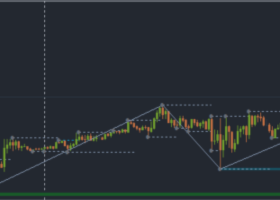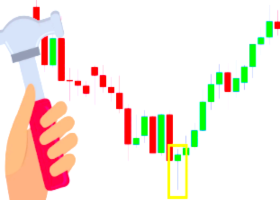The “strong dollar” has been a mantra for the United States for decades. Recently, as the euro has fallen to an 11-year low against the dollar, Treasury Secretary Jacob Lew has once again been paying homage. “I have been consistent in saying, as my predecessors have said, that a strong dollar is good for the United States.”
Really? This week, a slew of blue chip U.S. companies–from Caterpillar to Procter & Gamble to DuPont–reported a sharp fall in earnings attributed in part to the rising U.S. dollar.
While a stronger dollar lowers the cost of imports, which is good for consumers, it hurts U.S. competitiveness. With U.S. companies ever more dependent on exports and overseas sales, a strong dollar means that each sale denominated in weaker currencies abroad returns less to the United States. Doug Oberhelmen, chief executive of Caterpillar, said the surging dollar “will not be good for U.S. manufacturing or the U.S. economy.”
For the Obama administration, which has heavily promoted the importance of U.S.-based manufacturing and has made much of the recent small uptick in manufacturing jobs in the United States, a statement like that should be setting off alarm bells.
And if that’s not enough, this week’s House and Senate hearings on U.S. trade policy should have done the trick. One after another, members of Congress from both sides of the aisle said it was crucial that the administration at least try to address currency issues in the current Trans-Pacific Partnership (TPP) trade negotiations.
Yet the U.S. Trade Representative, Mike Froman, repeatedly deferred, saying that currency was a Treasury responsibility. And Treasury’s only response so far has been to say that the surging dollar is just fine.
The United States has made this mistake before. In the early 1980s, the Reagan administration whistled as the dollar soared to record levels against the Japanese yen, battering a U.S. manufacturing sector that was already facing an unprecedented competitive challenge from Japan.
It happened again in the early 2000s following China’s entry to the World Trade Organization. China had pegged the renminbi to the dollar in the mid-1990s (in part with U.S. encouragement), yet repeatedly refused to adjust the peg even as Chinese productivity soared and left the renminbi seriously undervalued. That currency peg was a major reason that the U.S. goods trade deficit with China rose from $80 billion in 2000 to more than $250 billion by 2007.
Again, the major losers were U.S.-based, internationally competitive manufacturing companies and their employees. The companies could respond (and did) by spreading their operations around the world; their employees had no such flexibility.
Currency values are largely determined by markets, of course, and Lew was correct in noting that the dollar’s surge is being driven by the relatively strong U.S. economy and weaknesses elsewhere in the world. But much as monetary authorities often try to tamp down an overly strong economy to prevent inflation, it makes sense for the United States to at least gently discourage the rising dollar rather than playing cheerleader.
Indeed, the danger now is that many countries will go in the other direction and leave the United States in an even worse position. For example Singapore, a free trade agreement partner, this week announced that it would seek to halt the appreciation of its local dollarand markets immediately drove it down sharply against the U.S. dollar. Other countries are likely to follow.
There are tools, if limited ones, to slow the dollar’s rise. Consistent U.S. government pressure on China over the past decade helped in persuading the Chinese to loosen the dollar peg and let the renminbi rise; indeed, with the recent rise in the dollar China has also lost some of its competitive edge in European and other markets.
Fred Bergsten of the Peterson Institute, in a recent Foreign Affairs article, called for more determined efforts to stop currency manipulation by U.S. trade partners, including countervailing intervention by the United States is cases where countries are aggressively intervening in markets to hold down their currencies.
Some, or all, of these would be inappropriate responses at the moment; much of the dollar’s recent rise has been driven not by government intervention but by European and Japanese efforts to use monetary policy to stimulate their flagging economies. The United States has done the same in the recent past, of course.
But clearly the worst thing to do is for the U.S. government to be actively encouraging currency movements that will undermine its own policy of rebuilding American manufacturing, increase protectionist sentiment in Congress and make it far more difficult to move forward with the TPP and other trade negotiations.
At the very least, it is past time for the government to stop talking about how a “strong dollar” is good for the United States.


